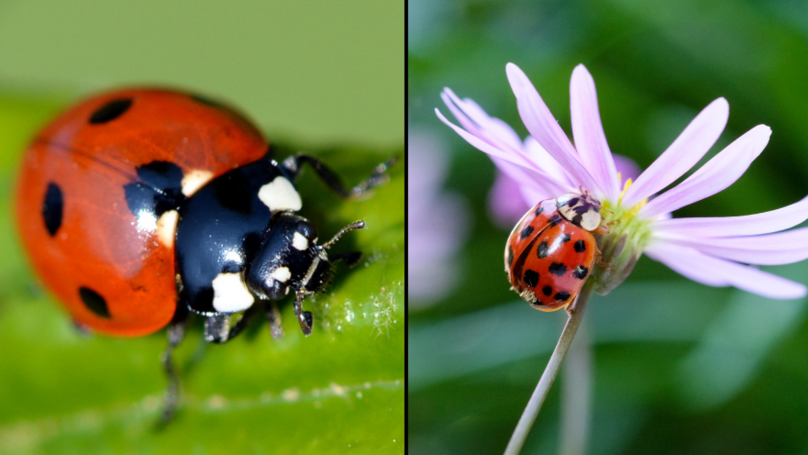
There are not a lot of insects which people generally let explore their bodies. If there is an earwig on your ear, it is getting the flick. If you feel ants in your pants, you are going to do the 'get out of my pants ants' dance moves.
However, a cute tiny ladybird is the exception to the rule for most people.
But there's a new type of ladybird arriving en masse in Britain, that is bringing with them STDs - so if you live in the country, you need to be careful what you let sit on your shoulder.
The Harlequin ladybirds have flown in from Asia and North America, taking advantage of mild autumn winds to pursue hibernation spots here, with the Manchester Evening News reporting that dozens of the creatures have been spotted in houses across Greater Manchester.


PA
The species are usually larger than those which were commonly accustomed to, like the two-spot ladybird, and could be a threat to native species because of the STD they carry, named Laboulbeniales fungal disease.
It's not clear how harmful the STD could be, but according to the UK Ladybird Survey, it could affect lifespan, or even the number of eggs a female ladybird can produce, which is concerning considering that native species are already threatened by habitat loss.
If you are finding ladybirds in your house, it is likely they are Harlequins, as native species tend to hibernate in trees.
The creatures are generally not harmful to people, although they may bite if food is not available, which could result in a small bump or sting. In extreme cases, people can have severe allergic reactions.
If the little critters have invaded your home, it is probably best to leave them be, as they sometimes secrete a yellow substance when disturbed, which could stain your furnishings... These guys get cuter and cuter.
Dr. Peter Brown, a ladybird survey organizer who is also a senior lecturer at Anglia Ruskin University, told the BBC the Harlequins' autumn swarming of houses had earned the species the nickname of the 'Halloween Ladybug' in the US.













COMMENTS